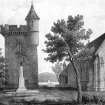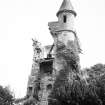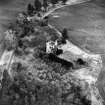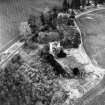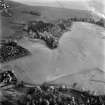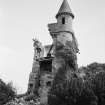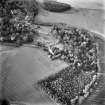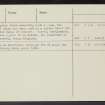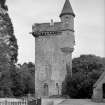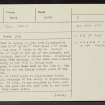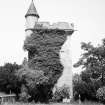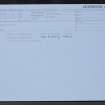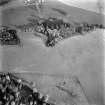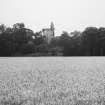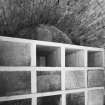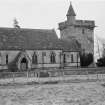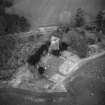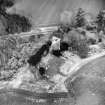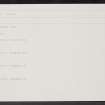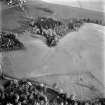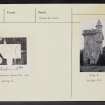Following the launch of trove.scot in February 2025 we are now planning the retiral of some of our webservices. Canmore will be switched off on 24th June 2025. Information about the closure can be found on the HES website: Retiral of HES web services | Historic Environment Scotland
Dunmore Park, Elphinstone Tower, Airth Tower
Burial Vault (19th Century), Tower House (16th Century)
Site Name Dunmore Park, Elphinstone Tower, Airth Tower
Classification Burial Vault (19th Century), Tower House (16th Century)
Alternative Name(s) Dunmore Tower; Elphinstone House
Canmore ID 46850
Site Number NS88NE 4
NGR NS 89018 88922
Datum OSGB36 - NGR
Permalink http://canmore.org.uk/site/46850
- Council Falkirk
- Parish Airth
- Former Region Central
- Former District Falkirk
- Former County Stirlingshire
NS88NE 4 89018 88922
NS88NE 24.00 88490 89195 Dunmore Park
NS88NE 40 88893 88537 The Pineapple
NS88NE 66 88993 88906 St Andrew's Episcopal Church and Churchyard (Dunmore Chapel)
NS88NE 67 89244 88559 The Parsonage
(NS 89018 88922) Tower (NR)
OS 6" map (1967)
A rectangular tower measuring 9.0m x 7.4m, the ground floor of which has been used as a burial vault for the family of the Earls of Dunmore. Turret, battlements, doors and windows appear to be modern, the remainder of the fabric apparently being original.
Visited by OS (JLD) 17 October 1953
Dunmore Tower is oblong on plan and measures 29'9" by 24'1" over walls 5'9" thick on three sides, but only 5' thick on the E. Rubble- built, it stands 57' high to the top of the parapet, and contains four storeys, each of a single room. Originally built in the early 16th century, it has been much altered and patched, mostly in the 19th century, though some alterations appear to have been made in the 17th century. The ground-floor room is now the family burial place of the Earls of Dunmore. This tower, at first known as Elphinstone Tower, was the principal messuage of the barony of Elphinstone, erected in 1504. In 1754, it was acquired by John, 4th Earl of Dunmore, who gave his own name both to the tower and the estate four years later.
RCAHMS 1963, visited 1955
Generally as described, although the NW angle was blown down by strong winds about 1968.
Visited by OS (DS) 30 January 1974.
EXTERNAL REFERENCE:
Scottish Record Office
Repair of the House of Elphinstone.
James Primrose, wright in Kincaid.
John Gibb Wright.
William Dunkeson, smith.
William Baad, wright.
James Logan, mason. (pounds)5552.19.10
1702
Rubble-built rectangular-plan tower, once measuring 9 x 7.4m but now greatly diminished. The walls measure some 5'9" thick in most sections, and each of the 4 floors once held a single room. The doors, windows and battlements are Victorian additions, as was the conical fishscale-slated turret which has now been lost. The tower is enclosed to the south and west by the graveyard of the demolished Episcopal Church and remains one of the few estate buildings to predate the 19th century remodelling.
Originally built in 1504 by Sir John Elphinstone, it was known as the Elphinstone Tower for the next 250 years before the estate was bought by John, 4th Earl of Dunmore in 1754 and was renamed Dunmore Park. The ground floor of the tower was later converted into the family's burial vault.
Photographic Survey (1962)
Photographic survey by the Scottish National Buildings Record in 1962.



































